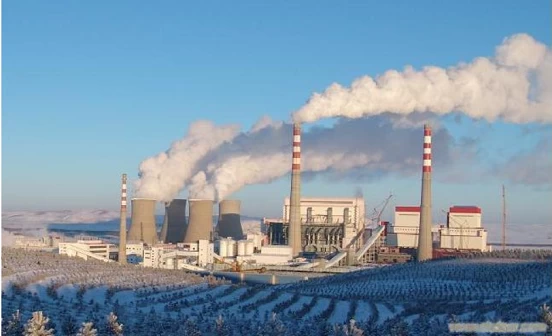Boiler Terminology Explanation (Part 8)
Boiler Terminology Explanation (Part 8)
71. Fundamental Microstructure of Steel
The fundamental microstructures of steel include austenite, ferrite, pearlite, bainite, martensite, and carbides. As a China high pressure dual plate check valve manufacturer, we understand that these microstructures play a key role in determining the mechanical properties and performance of steel used in industrial applications. Among these, austenite, ferrite, and martensite are solid solutions (where two or more components dissolve into each other in the liquid state and remain dissolved as a uniform phase in the solid state). Solid solutions are categorized into substitutional, interstitial, and vacancy types, with austenite, ferrite, and martensite being interstitial solid solutions. Pearlite and bainite are mechanical mixtures (where the components do not dissolve in the solid state and do not form compounds, maintaining their individual crystal structures and properties). Carbides are compounds formed at a fixed atomic ratio and can be expressed using a simple chemical formula. Cementite (iron carbide) is an example of carbide in steel.
72. Austenite
Austenite is a solid solution formed when carbon or other alloying elements dissolve into γ-iron. It has a face-centered cubic (FCC) structure, is non-magnetic, and exhibits good plasticity and toughness. Austenite typically exists at high temperatures in steel. After quenching, some austenite may remain at room temperature, known as retained austenite. In alloy steels, elements like Ni and Mn can expand the γ-phase region, allowing austenite to remain stable even at temperatures below room temperature, which forms austenitic steel.
73. Ferrite
Ferrite is a solid solution formed when carbon or other alloying elements dissolve into α-iron. It has a body-centered cubic (BCC) structure, offering good plasticity and toughness. Ferrite is the primary microstructure in low- and medium-carbon steels and low-alloy steels. As the ferrite content increases, the steel becomes more ductile and tough but with reduced strength. Adding alloying elements such as Si, Ti, and Cr restricts the γ-phase region, which allows ferrite to persist at both high and room temperatures, forming ferritic steel.
74. Pearlite
Pearlite is a mechanical mixture composed of ferrite and cementite, typically in a lamellar structure. It forms through the eutectoid transformation of austenite below the A1 temperature. Pearlite provides high strength and hardness, and the mechanical properties of medium-carbon and low-alloy steels depend on the quantity and spacing of the pearlite lamellae. The finer the lamellae, the higher the strength. Lower transformation temperatures result in different forms such as coarse pearlite, fine pearlite, sorbite, and troostite, all belonging to pearlitic structures, but with varying lamellar spacing.
75. Bainite
Bainite is a two-phase mixture of supersaturated ferrite and dispersed cementite, forming an unstable microstructure. The shape of bainite depends on the transformation temperature and alloying elements, resulting in upper bainite, lower bainite, granular bainite, and carbide-free bainite.
Upper bainite has a feather-like structure, composed of parallel ferrite laths with interlath cementite in plate or short rod forms. This structure has a high dislocation density, resulting in high strength but low toughness.
Lower bainite consists of needle-like ferrite laths at specific angles, with uniformly dispersed fine carbides. This type has high strength and excellent wear resistance due to its high-density dislocations and evenly distributed carbides.
76. Martensite
Martensite is a supersaturated solid solution of carbon in iron, formed by the non-diffusional transformation of undercooled austenite. It has a body-centered tetragonal (BCT) structure. The shape of martensite varies with carbon content.
Low-carbon martensite appears as lath-like structures, parallel in bundles, and shows excellent toughness along with high strength and hardness.
High-carbon martensite forms as plate-like structures with a twinned substructure, exhibiting extremely high hardness.
77. Alloy Steel
Alloy steel is an iron-carbon alloy with additional alloying elements to improve its properties. Compared to carbon steel, alloy steel offers superior mechanical, physical, chemical, heat resistance, and processing characteristics.
78. Carbon Steel
Carbon steel contains up to 1.35% carbon, along with small amounts of Mn, Si, P, S, and trace elements. Carbon content is the primary factor determining the steel's properties and applications. Carbon steel is widely used in thermal power plant components that operate at temperatures below 450°C.
By composition, carbon steel is classified into low-carbon, medium-carbon, and high-carbon steel.
By quality, it is divided into ordinary carbon steel, high-quality carbon steel, and premium-quality carbon steel.
By application, it is categorized as carbon structural steel and carbon tool steel.
79. Heat-Resistant Steel
Heat-resistant steel refers to alloys designed to maintain high-temperature strength, oxidation resistance, corrosion resistance, and long-term structural stability. Alloying elements such as Cr, Si, Al, Mo, V, W, Nb, Ti, B, and rare earth elements enhance these properties.
High-temperature strength is improved by adding elements like Cr, Mo, and W.
Oxidation resistance is enhanced by Cr, Si, and Al.
Corrosion resistance is crucial, especially in environments with sulfurous gases in boilers, and is improved by adding Cr, Al, and Si.
Structural stability is essential for the long-term use of components in high-temperature environments, such as those in thermal power plants. Elements like Cr, Mo, and V help prevent carbide spheroidization and graphite formation.
80. Austenitic Heat-Resistant Steel
Austenitic heat-resistant steel is a type of steel that has an austenitic or austenite-ferrite dual-phase structure at room temperature. It generally contains less than 50% alloying elements, primarily Cr and Ni, with additions of W, Mo, Cu, and Ti for enhanced strength.
These steels provide excellent high-temperature strength and oxidation resistance above 600°C but have limitations such as high cost, low thermal conductivity, high expansion coefficients, and susceptibility to stress corrosion cracking.

 +86 512 68781993
+86 512 68781993 


















